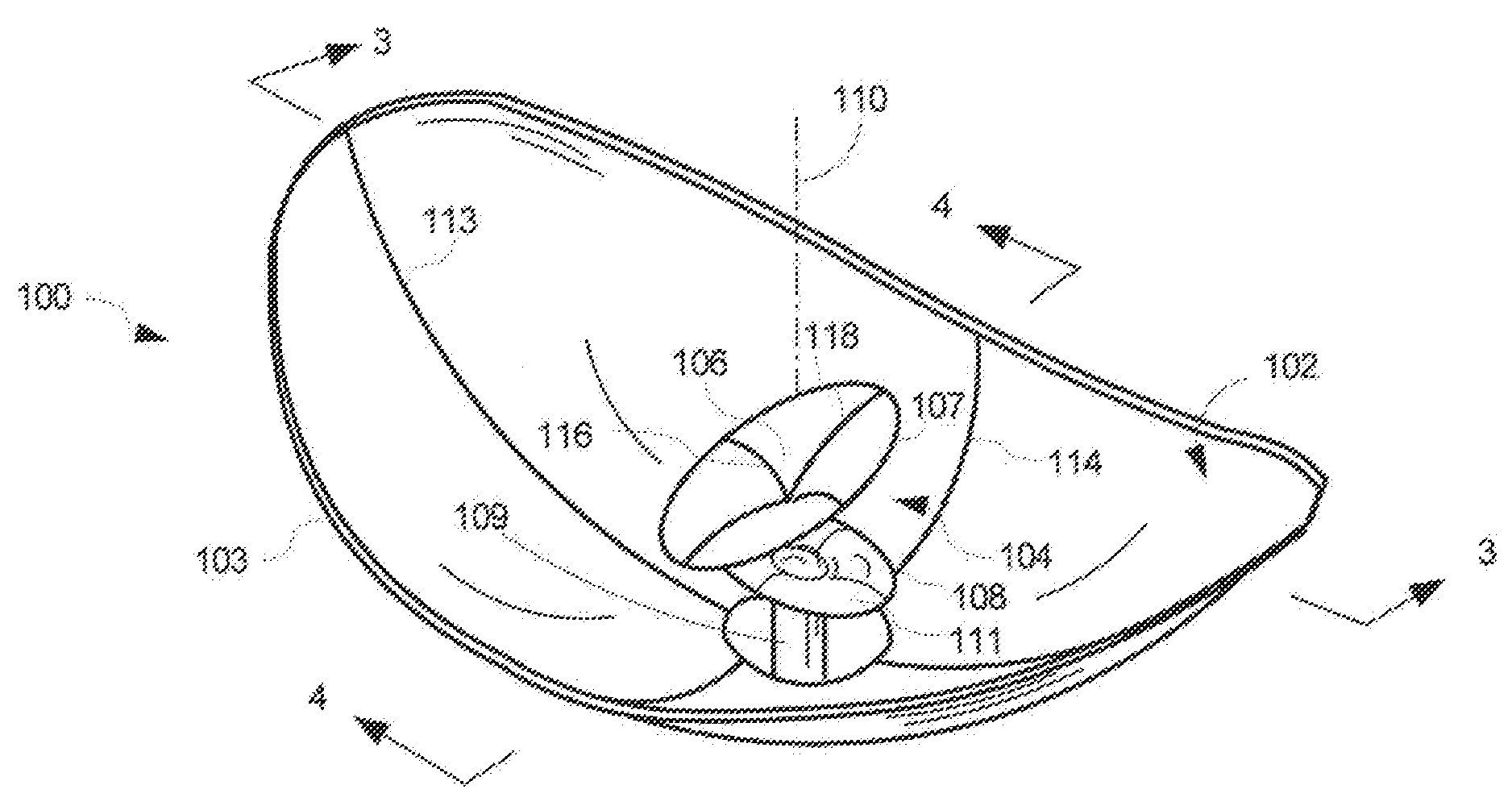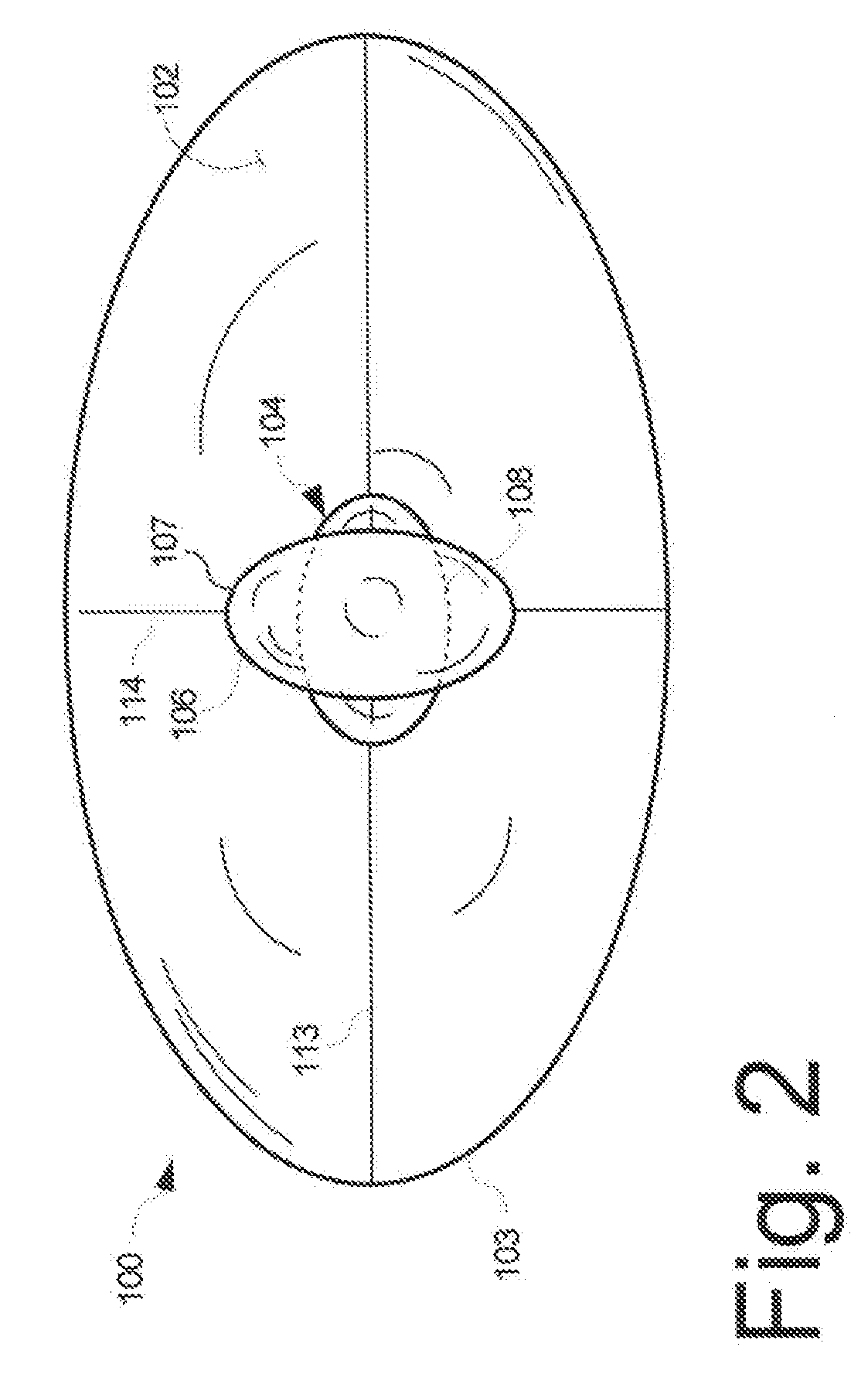Antenna with Shaped Asymmetric Main Reflector and Subreflector with Asymmetric Waveguide Feed
a technology of asymmetric reflector and asymmetric waveguide feed, which is applied in the direction of antennas, electrical equipment, etc., can solve the problems of low profile form factor, inconvenient installation, and inability to meet the needs of many applications,
- Summary
- Abstract
- Description
- Claims
- Application Information
AI Technical Summary
Benefits of technology
Problems solved by technology
Method used
Image
Examples
Embodiment Construction
[0020]Shaped ring focus antennas typically have a main reflector and a subreflector, each formed from a conductive material or mesh. The main reflector is usually formed as a shaped surface of revolution defined by a split, approximately parabolic, curve. The subreflector is typically formed as a shaped surface of revolution defined by an approximately, but not precisely, elliptical curve. The main reflector and the subreflector each have a symmetric circular edge configuration in conventional designs. In particular, when the reflectors are viewed along a boresight axis of the antenna, the perimeter or edge of each unit forms a symmetric circular profile. Although these types of shaped ring focus antennas with circular edge configurations work well with regard to electrical performance, their form factor does not work well in all applications. For example, a conventional ring focus antenna design will have a relatively high profile when mounted on a vehicle if the antenna is to be c...
PUM
 Login to View More
Login to View More Abstract
Description
Claims
Application Information
 Login to View More
Login to View More - R&D
- Intellectual Property
- Life Sciences
- Materials
- Tech Scout
- Unparalleled Data Quality
- Higher Quality Content
- 60% Fewer Hallucinations
Browse by: Latest US Patents, China's latest patents, Technical Efficacy Thesaurus, Application Domain, Technology Topic, Popular Technical Reports.
© 2025 PatSnap. All rights reserved.Legal|Privacy policy|Modern Slavery Act Transparency Statement|Sitemap|About US| Contact US: help@patsnap.com



